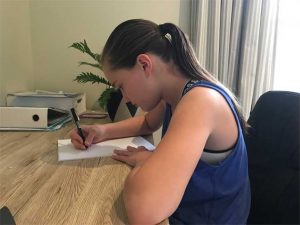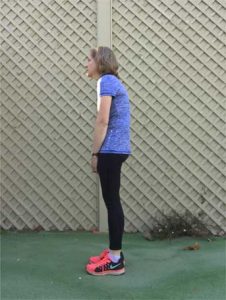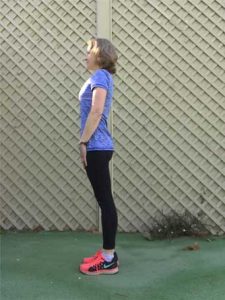
Consider how effortlessly we walked, crouched and bent over when we were toddlers.
Unfortunately as we grow older, sit hunched at desks and mimic adults slouching in chairs, this natural ease of movement often starts to fade.
Instead we unconsciously learn movement patterns that we think will help us achieve what we want, usually as quickly as possible and often involving excessive tension.
For example – tightening the shoulders and arms to try to walk quicker, clenching the teeth to open a can of tomatoes, lifting the shoulder excessively to reach for something and heaving up the front of the chest to maintain uprightness on a chair.
 Over time we start to develop minor niggles in the neck, upper shoulders and back, which we put down to having to sit too long or stand too long.
Over time we start to develop minor niggles in the neck, upper shoulders and back, which we put down to having to sit too long or stand too long.
Sometimes, it stops there but for some people pain and stiffness can go on to create more significant back, neck, shoulder, knee pain etc. that can lead to time off work or having to give up sport, exercise or hobbies that they love
Traditional posture and movement lessons look at strengthening specific muscles in order to sit or stand up taller. This often leads to increased pain and tightness in different parts of the body.
For example-
See below a typical depiction of ‘bad’ and ‘good’ posture that you might find on the internet.

 The posture on the right would be a common example of ‘good posture’. However a collapsed upper chest and strained muscles on the back of the neck on the left photo (‘bad posture’) has been replaced with a very tight lower back, over straightened neck, pulled back shoulders and tightened upper back on the right photo.
The posture on the right would be a common example of ‘good posture’. However a collapsed upper chest and strained muscles on the back of the neck on the left photo (‘bad posture’) has been replaced with a very tight lower back, over straightened neck, pulled back shoulders and tightened upper back on the right photo.
This depiction of ‘good posture will be very hard to maintain and can lead to further strain and pain in the body but just in different areas.
In the Alexander Technique we look at the balance of the whole body. By learning how to directly control different parts of the torso and the relationship of the torso with the limbs, lengthening of the muscles occur in order to maintain the body in uprightness with minimal energy and maximal efficiency in order to improve balance and reduce pain.
Whereas traditionally people think of posture as a fixed place to be in space, the Alexander Technique defines posture as the dynamic use of the muscles on both sides of the torso, arms and legs (i.e. the flexor and extensor muscles) that we can consciously control in order to return an elasticity and buoyancy to the body.
If you have been suffering from chronic lower back, shoulder, neck pain and have tried multiple remedies – it’s time to try a different approach.
CONTACT
START WITH POSTURE
FOR MORE INFORMATION OR TO MAKE A BOOKING.
For further information on scientific research on the Alexander technique [click here]
Client Testimonials


